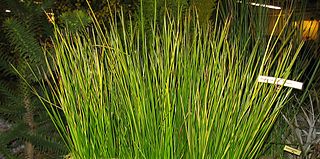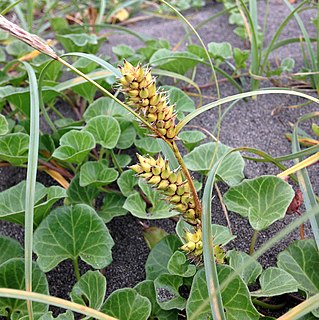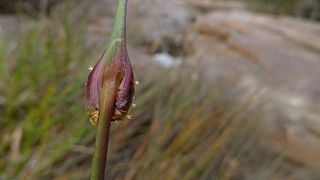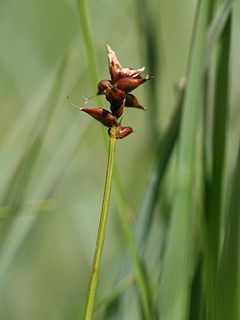
Urtica dioica, often known as common nettle, stinging nettle or nettle leaf, or just a nettle or stinger, is a herbaceous perennial flowering plant in the family Urticaceae. Originally native to Europe, much of temperate Asia and western North Africa, it is now found worldwide, including New Zealand and North America. The species is divided into six subspecies, five of which have many hollow stinging hairs called trichomes on the leaves and stems, which act like hypodermic needles, injecting histamine and other chemicals that produce a stinging sensation upon contact. The plant has a long history of use as a source for traditional medicine, food, tea, and textile raw material in ancient societies such as the Saxons.

Yanal Bog is a 1.6 hectare biological Site of Special Scientific Interest on the southern edge of the North Somerset Levels, just north of the village of Sandford, North Somerset. It was notified as an SSSI in 1988.

Wurmbea dioica, commonly known as early Nancy, is a species of plant in the family Colchicaceae and is endemic to Australia. It is a herb with three linear to thread-like leaves and usually two to seven white flowers with a purple or greenish nectary band.

Caustis is a genus of rhizomatous sedges. The species, all endemic to Australia, are as follows:

Machaerina rubiginosa, commonly known as soft twig rush, flat leaf twig rush or common twig rush, is a flowering plant in the sedge family, Cyperaceae, that is native to Asia and the Pacific.

Bulbostylis barbata is a flowering plant in the sedge family, Cyperaceae, that is native to Western Australia.
Bulbostylis turbinata is a flowering plant in the sedge family, Cyperaceae that is native to Western Australia.

Carex pumila, commonly known as strand sedge or spreading sedge, is a species of sedge of the family Cyperaceae.
Caustis deserti, commonly known as desert twig-rush, is a sedge that is native to a small area in the Goldfields-Esperance region of Western Australia to the east of Kalgoorlie.
Caustis gigas, commonly known as giant twig-rush, is a sedge that is native to Western Australia.

Chorizandra cymbaria, commonly known as heron bristle rush or heron bristle sedge, is a sedge of the family Cyperaceae that is native to Australia.

Chorizandra enodis, commonly known as black bristle rush or black bristle sedge, is a sedge of the family Cyperaceae that is native to Australia.

Caustis recurvata, commonly known as curly sedge or pubic hair sedge, is a sedge of the family Cyperaceae that is native to Australia.

Cyperus alterniflorus, commonly known as umbrella flat-sedge, is a sedge of the family Cyperaceae that is native to Australia.
Cyperus cuspidatus is a sedge of the family Cyperaceae that is native to Australia.
Cyperus hamulosus is a sedge of the family Cyperaceae.

Cyperus vaginatus, commonly known as stiff-leaf sedge or stiff flat-sedge, is a sedge of the family Cyperaceae that is native to Australia.
Eleocharis acuta, commonly known as common spikerush or small spikerush, is a sedge of the family Cyperaceae that is native to Australia.
Fimbristylis microcarya is a sedge of the family Cyperaceae that is native to Australia.

Carex dioica, the dioecious sedge, is a species of flowering plant in the genus Carex, native to Iceland, the Faroes, Svalbard, nearly all of Europe, western Siberia, and the Altai. It prefers to live in calcareous fens.














